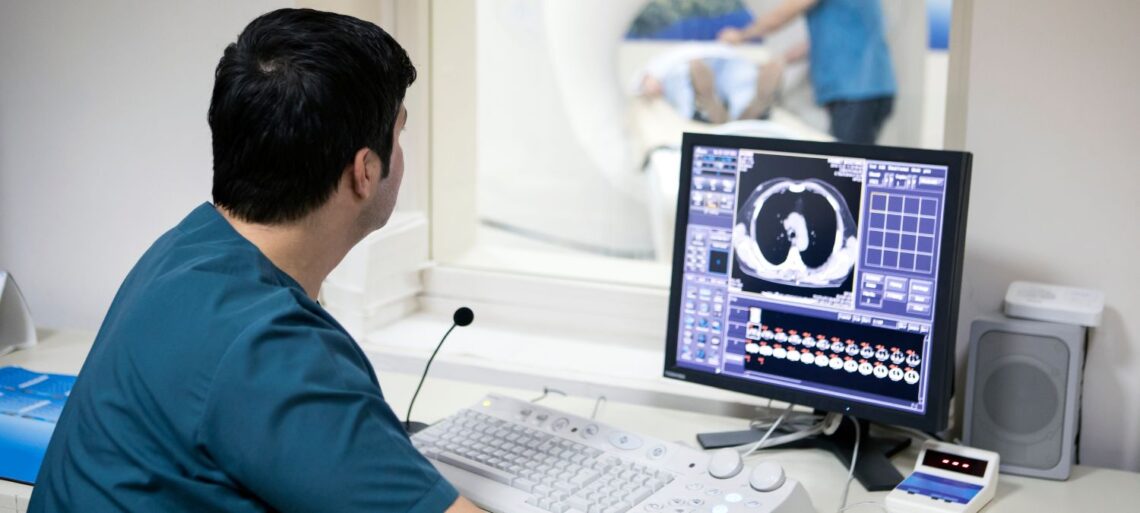
How To Become Radiologist | SkillsAndTech
So you want to become a radiologist? It’s a great career choice! Radiologists are in high demand and the field is expected to grow by 14% in the next decade. Plus, it’s a well-paid profession with a median salary of $315,000.
But becoming a radiologist is no easy feat. It requires many years of schooling and training. In this blog post, we will outline everything you need to do to become a successful radiologist. From choosing the right undergraduate degree to completing your residency, we’ve got you covered.
Table of Contents
What is a radiologist?
Radiologists are physicians who specialize in diagnosing and treating diseases and injuries using medical imaging techniques, such as x-rays, computed tomography (CT), magnetic resonance imaging (MRI), and ultrasound.
Radiologists play a critical role in the detection and treatment of many conditions, including cancer, heart disease, and stroke. They often work closely with other physicians to provide comprehensive care for patients.
Becoming a radiologist requires completing a four-year undergraduate degree, followed by four years of medical school. After medical school, radiologists must complete a residency program that typically lasts four years. Some radiologists may also choose to complete fellowships lasting one to two years to further subspecialize in a particular area of radiology.
What are the educational requirements to become a radiologist?
There are many different paths that one can take to become a radiologist.
Some radiologists may have a bachelor’s degree in radiology, while others may have a medical degree and complete a residency in radiology. Many radiologists also choose to pursue fellowships or other advanced training after completing their residency.
The type of education and training required to become a radiologist will vary depending on the specific field of radiology you wish to practice. For example, those wishing to work in interventional radiology or nuclear medicine will need to complete additional training beyond what is required for general radiology.
What type of training is required to become a radiologist?
There are many routes that one can take to become a radiologist. The type of training required will depend on the specific route that is chosen.
One option is to complete a four-year undergraduate degree, followed by a four-year medical degree. After completing medical school, individuals would then complete a three-year residency in diagnostic radiology.
Some individuals may choose to complete an additional fellowship year in a subspecialty area of radiology such as nuclear medicine, interventional radiology, or pediatric radiology.
Alternatively, one could complete a two-year associate’s degree in radiologic technology followed by completion of a certificate program or bachelor’s degree in radiologic science.
After finishing their educational requirements, individuals would then need to obtain certification from the American Registry of Radiologic Technologists (ARRT). Once certified, they would then be eligible to apply for state licensure.
Once licensed, they could then begin working as a radiographer. Some radiographers may choose to specialize in a particular area of imaging such as computed tomography (CT) or magnetic resonance imaging (MRI).
Individuals who are already working as registered nurses (RNs) may also pursue a career in radiology by obtaining advanced education and training. RNs can complete a bachelor’s or master’s degree in nursing with a specialization in radiation oncology nursing. Alternatively, RNs can complete an accredited diagnostic radiography program and then sit for the ARRT certification exam. Once certified
What are the certification and licensure requirements to become a radiologist?
In order to become a radiologist, you must first complete an accredited radiology training program. Once you have completed your training, you will be required to obtain a state license in order to practice. Additionally, many states require radiologists to obtain certification from the American Board of Radiology (ABR).
What are the job outlook and salary expectations for radiologists?
The job outlook for radiologists is positive, with an expected 9% growth in employment from 2019 to 2029. This growth is due to an aging population and the increasing use of diagnostic imaging.
Radiologists earn a median salary of $315,000 per year. Salaries vary by experience, specialty, and location. Radiologists who work in hospitals tend to earn more than those who work in private practices.
Conclusion
In conclusion, if you want to become a radiologist, you need to complete an accredited radiology program and pass the required examinations. Once you have completed your training, you will need to obtain a license from your state’s medical board in order to practice. Although becoming a radiologist requires a significant amount of time and effort, it can be a rewarding career that offers excellent job security and opportunities for advancement.
FAQ (Frequently Asked Question)
How many hours of Radiologist Work ?
There is no one-size-fits-all answer to this question, as the amount of hours worked by a radiologist can vary depending on the specific field and workplace. However, according to the Bureau of Labor Statistics, the median annual wage for radiologists was $395,180 in May 2019, which equates to approximately $190 per hour.
Thus, while some radiologists may work fewer than 40 hours per week, many are likely earning significantly more than this figure.
How long does it take to become a Radiologist?
There is no one-size-fits-all answer to this question, as the amount of time it takes to become a radiologist can vary depending on factors such as your prior experience and education.
However, in general, it typically takes around eight years to complete the necessary training to become a licensed radiologist.
This includes four years of undergraduate study, followed by four years of medical school. After graduating from medical school, you will then need to complete a one-year internship and a three-year residency program in radiology.
Once you have completed your training, you will be eligible to take the radiologist certification exam administered by the American Board of Radiology. Upon passing this exam, you will officially be a board-certified radiologist and can begin practicing in your chosen field.
How much does it cost to be a Radiologist?
Radiologists are in high demand and command high salaries. The median salary for a radiologist is $315,000, according to the latest data from the American Medical Group Association. But becoming a radiologist takes years of schooling and training, and the cost can be substantial.
Here’s a look at the typical costs associated with becoming a radiologist:
Medical School: $150,000 – $200,000
Residency: $50,000 – $60,000
Fellowship: $30,000 – $50,000
Licensing and Certification: $1,500 – $2,500
Total Cost: $232,500 – $312,500
How much do Radiologist make ?
The average salary for a Radiologist is $315,596 per year in the United States. However, experienced radiologists can earn up to $500,000 per year or more. Salaries also vary depending on location, with radiologists in large metropolitan areas earning more than those in smaller cities or towns.
What does a Radiologist do ?
A radiologist is a physician who specializes in diagnosing and treating diseases and injuries using imaging techniques such as x-rays, computed tomography (CT), magnetic resonance imaging (MRI), and ultrasound.
Radiologists work in hospitals, clinics, and private practices. They often work with other physicians, such as surgeons, to guide them through procedures using images. In some cases, radiologists may also provide treatment, such as cancer therapy using radiation.
To become a radiologist, you will need to complete four years of medical school and four years of residency training in diagnostic radiology. You may then choose to pursue fellowship training in a subspecialty area of radiology.





